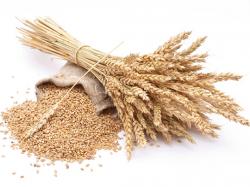How Gluten-Free Is Your Flour?
September 30, 2014 | 1 min to read

It is well known that oats can be cross-contaminated with the gluten-containing grains wheat, rye and barley. But what about other, naturally gluten-free grains, flours and starches? How safe are they for those with celiac disease? Research is shedding some light on this important question.
Dietitian Tricia Thompson broached the topic by sending 22 packages of gluten-free grains, flours and seeds that were not labeled “gluten-free” for gluten analysis. Fifty-nine percent or 13 samples – including white and brown rice; amaranth, rice, sorghum and soy flours – contained under 5 parts per million of gluten. But 41 percent (nine samples) tested above 5 ppm of gluten, with seven samples at or above 20 ppm. Under the Food and Drug Administration’s 2013 labeling regulations, only foods that test below 20 ppm of gluten can be sold as gluten-free.
Thompson’s research revealed that inherently gluten-free items can be contaminated with gluten, and that a voluntary “may contain” warning statement does not always correlate with the level of contamination. She concluded that a larger study would be needed to determine whether specific raw products tend to be more contaminated than others.
To read the rest of the story, please go to: Allergic Living
